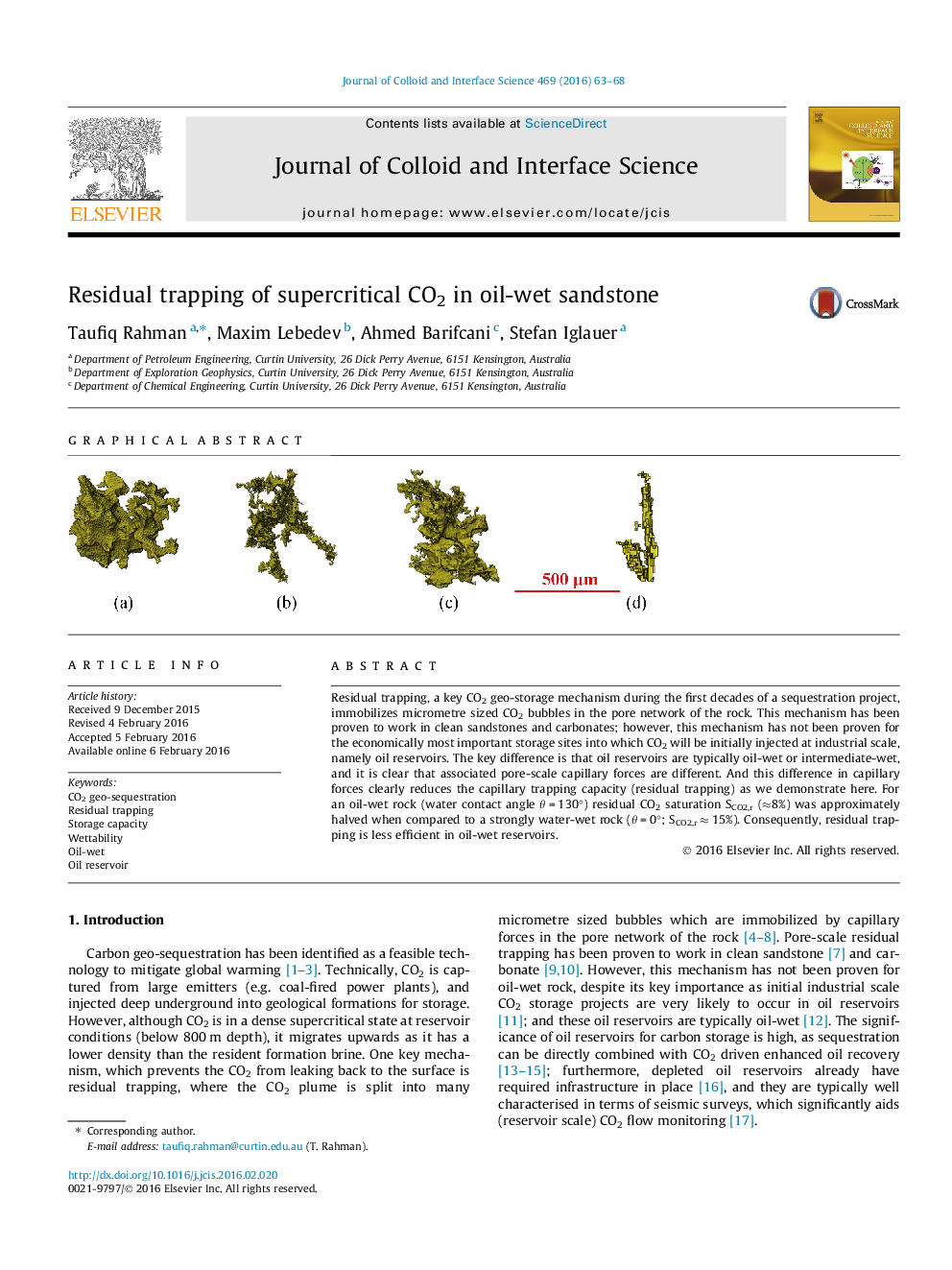| کد مقاله | کد نشریه | سال انتشار | مقاله انگلیسی | نسخه تمام متن |
|---|---|---|---|---|
| 606542 | 1454526 | 2016 | 6 صفحه PDF | دانلود رایگان |
Residual trapping, a key CO2 geo-storage mechanism during the first decades of a sequestration project, immobilizes micrometre sized CO2 bubbles in the pore network of the rock. This mechanism has been proven to work in clean sandstones and carbonates; however, this mechanism has not been proven for the economically most important storage sites into which CO2 will be initially injected at industrial scale, namely oil reservoirs. The key difference is that oil reservoirs are typically oil-wet or intermediate-wet, and it is clear that associated pore-scale capillary forces are different. And this difference in capillary forces clearly reduces the capillary trapping capacity (residual trapping) as we demonstrate here. For an oil-wet rock (water contact angle θ = 130°) residual CO2 saturation SCO2,r (≈8%) was approximately halved when compared to a strongly water-wet rock (θ = 0°; SCO2,r ≈ 15%). Consequently, residual trapping is less efficient in oil-wet reservoirs.
Figure optionsDownload high-quality image (151 K)Download as PowerPoint slide
Journal: Journal of Colloid and Interface Science - Volume 469, 1 May 2016, Pages 63–68
